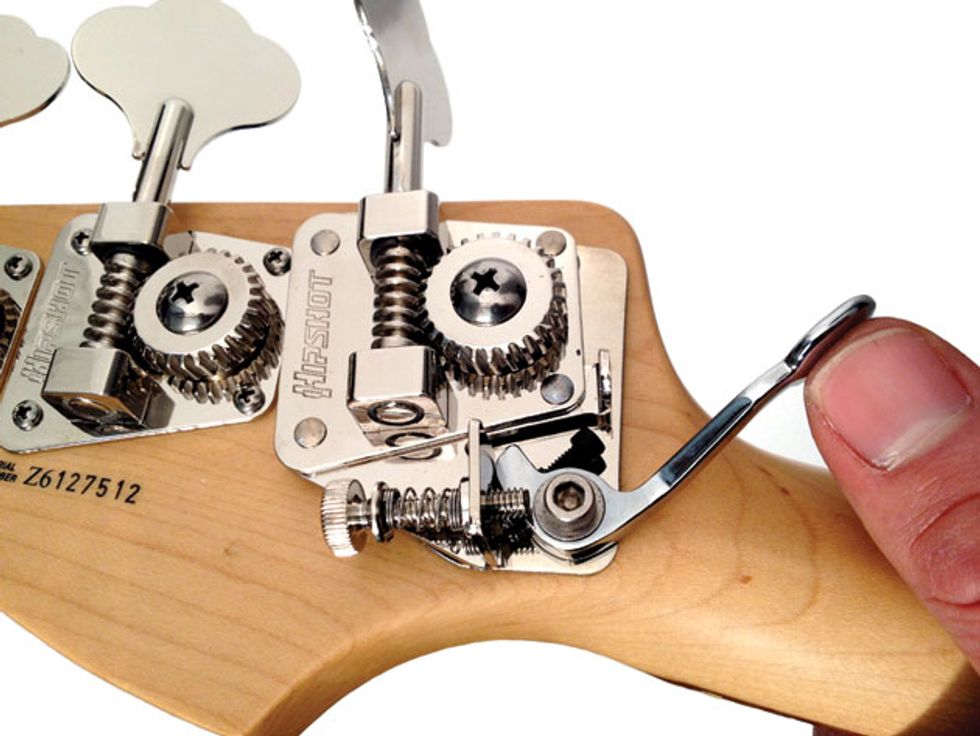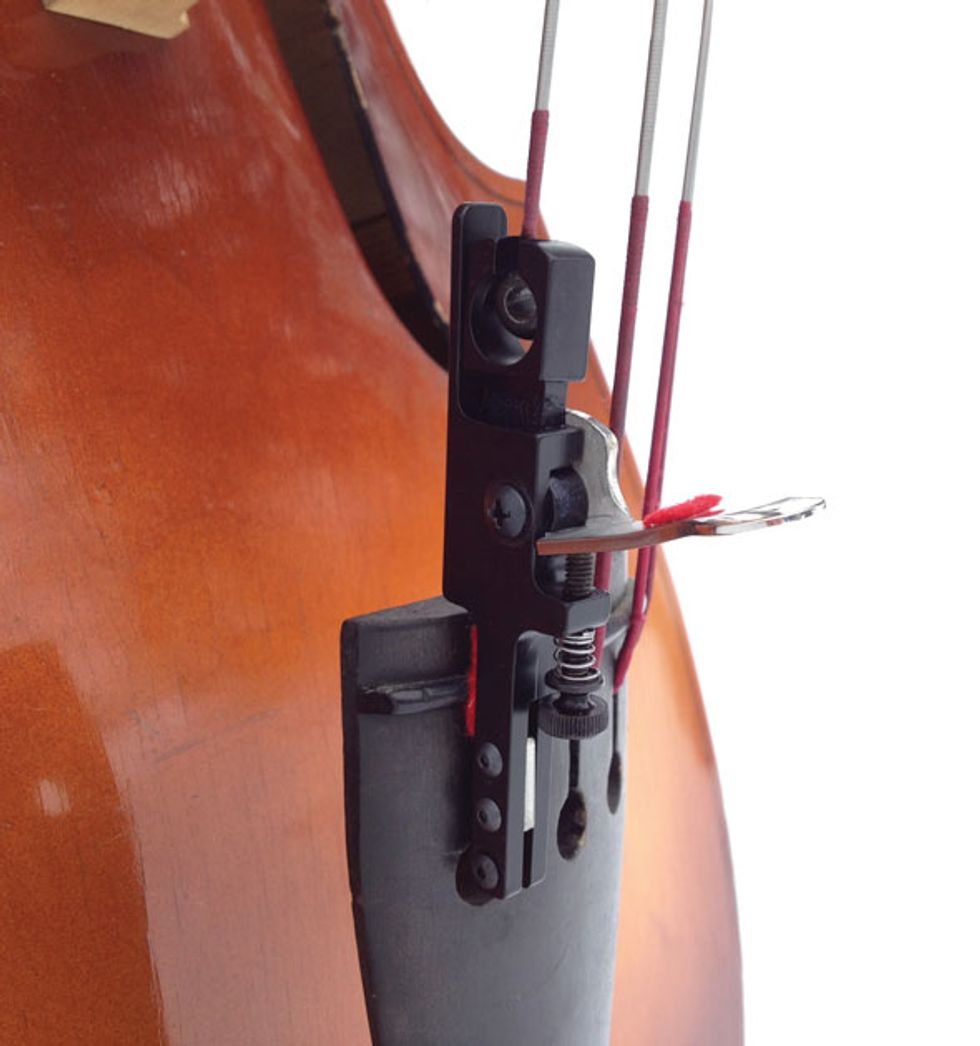Fig. 1. Hipshot’s Double Stop Lever lets you access two pre-adjustable detuned pitches.
As we know, the electric bass has been tuned E–A–D–G since it made its debut in the early ’50s. This convention only began to change in the ’70s, after a few bassists managed to thrust their instrument into the spotlight. Today extended range, multi-scale basses use all sorts of tunings, yet most players stick with traditional perfect fourths tuning and rarely even think about changing it—even on their 5-stringers.
Extended-range basses didn’t appear overnight, and the initial attempts to add flexibility to low-end tuning were quite slow and tentative. D-tuners were the first little helpers for those in need of a quick low D, and they’re still relatively new. But dropped-D tuning itself has a much longer history, dating back to the Beatles, Neil Young, Pink Floyd, and even a guitar transcription of Bach’s Musette in D Major.
Of course this was accomplished by manual retuning, without the benefit of a quick flip of a lever. It was Hipshot’s Dave Borisoff who gave us that idea in 1984. He patented the device and after it caught Billy Sheehan’s attention at NAMM, Borisoff’s D-tuners (or Bass Xtenders, in Hipshot parlance) quickly became popular.
In the early years, Borisoff modified standard Schaller tuners to make his D-tuners, but once demand increased, he started his own production around 1985. Currently Hipshot produces a wide range of D-tuners for bass and guitar, but Borisoff didn’t stop there: He now also offers a Double Stop Lever upgrade (Fig. 1) that allows you to switch to two pre-adjustable pitches. Counting the original open E, you can choose one of three open notes for your 4th string.
As with many ideas from the adventurous ’80s, D-tuners have had their ups and downs over the years, but judging from the numerous requests I’ve had to install these devices, D-tuners show signs of being “up” again. Could this be a reaction to behemoth extended-range instruments? By heading for 9- or even 12-string “basses,” perhaps some players took it a bit too far and inadvertently kicked off a back-to-basics trend. A 4- or 5-string bass equipped with a dropped-tuning mechanism may provide the ideal compromise between simplicity and flexibility.
An intriguing thought: Since almost every metal band tunes down, it makes you wonder if country players shouldn’t tune up? If no one is tuning up, the future of bass must be to head even lower, yet there are only 30.9 Hz left under low B until the pitch hits DC.
Writing a column always involves some web browsing—and crossing paths with the ineluctable whiners. Reading their comments, you might wonder why anyone should bother trying anything new at all. The naysayers main concerns are (1) string breakage, (2) wearing out the nut, and (3) twisting the neck.
As for string-breakage: How often do we throw away a fairly good E string because of a dull-sounding or broken G string? Breaking an E-string does happen, but it’s far from being a real problem.
Every tuning process benefits from a slippery nut, and this is especially true when you switch between preset tunings. But this is why we have graphite nuts.
And then there is the change of tension when you drop the 4th string’s pitch. It’s easy to calculate using specific values (tension, frequency, scale length, and density) given by string manufacturers, but still, those tension differences hardly connect to the world of playing. So keeping the tension constant, the detuning would feel like the difference between going from a .100 E string to a .090 version. Assuming you only do this on one string, this small change would hardly require a new setup, much less threaten neck stability.
Fig. 2. Now upright bassists can get in on the dropped-tuning action. Photos courtesy of hipshotproducts.com
So if the cons don’t count, what benefits can a D-tuner provide? Correct—you’ll get a low D or even lower note, but there’s more. Ever noticed how quickly we get stuck in our habits? Changing your tuning can open new worlds of inspiration and pull you out of the monotonous loop of unvarying finger patterns. Instead of just buying new gear, why not push your creativity by relearning and mastering an altered fretboard?
Give it a try: Detune one or two strings and head out for your regular rehearsals or play a well-known song. If you’ve never done that, you’ll be surprised at the new brain activity! New tunings can bring out more musical creativity than a whole bunch of new stompboxes. And the “hand detuning” investment is a no-brainer because it lets you explore the benefits of a retuned your bottom string before opening your wallet.
Technically, there are more ways to detune than just using a rotating tuning key. Fig. 2 illustrates just one of these other methods. It also shows that upright players are not left out of the dropped-tuning game, but that’s a discussion for another time. The good news for gear heads is that manufacturers offer more than just one type of D-tuner, and we’ll dig deeper into those options next month.









![Rig Rundown: AFI [2025]](https://www.premierguitar.com/media-library/youtube.jpg?id=62064741&width=1245&height=700&quality=70&coordinates=0%2C0%2C0%2C0)












 Shop Scott's Rig
Shop Scott's Rig















































